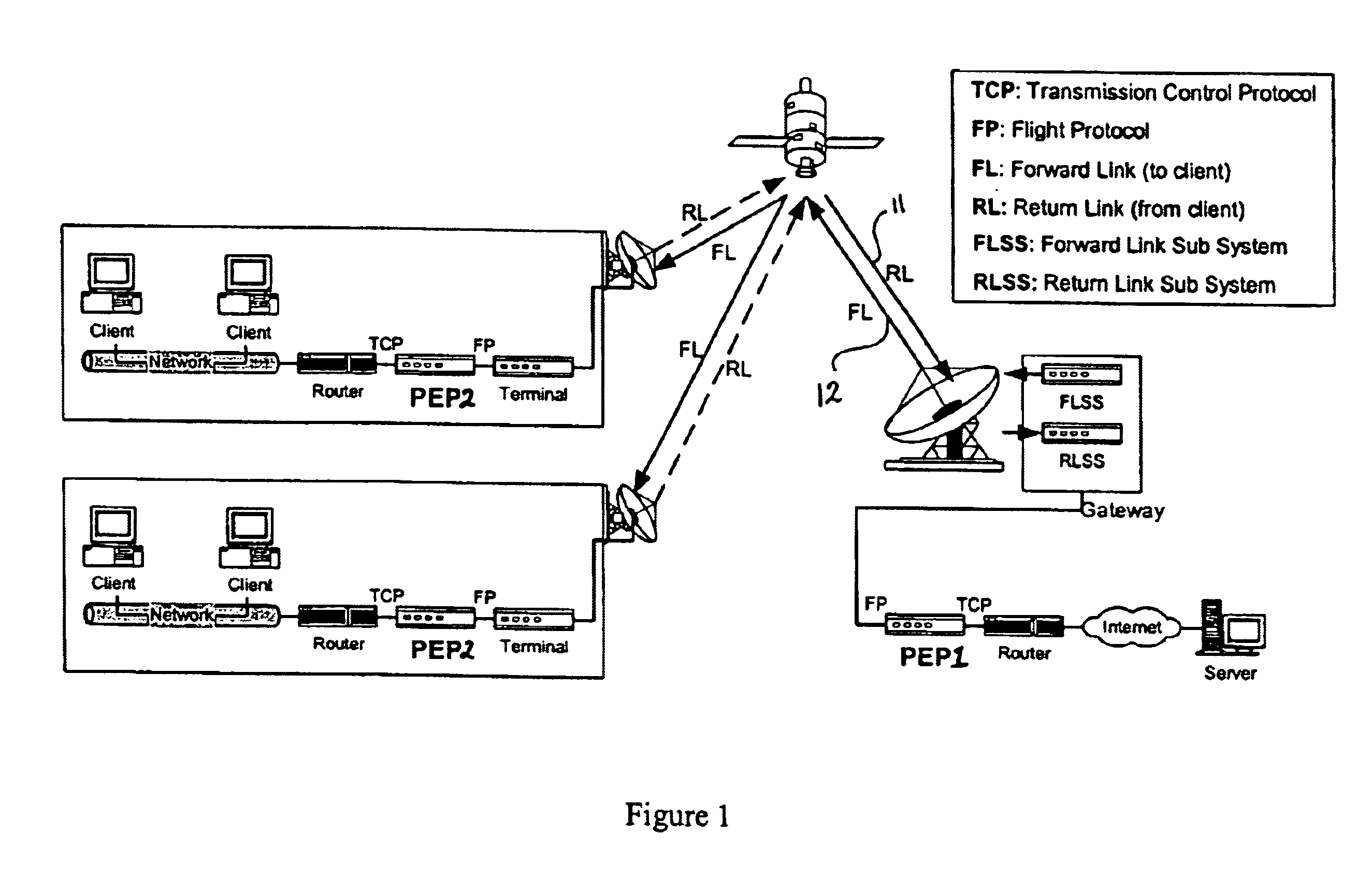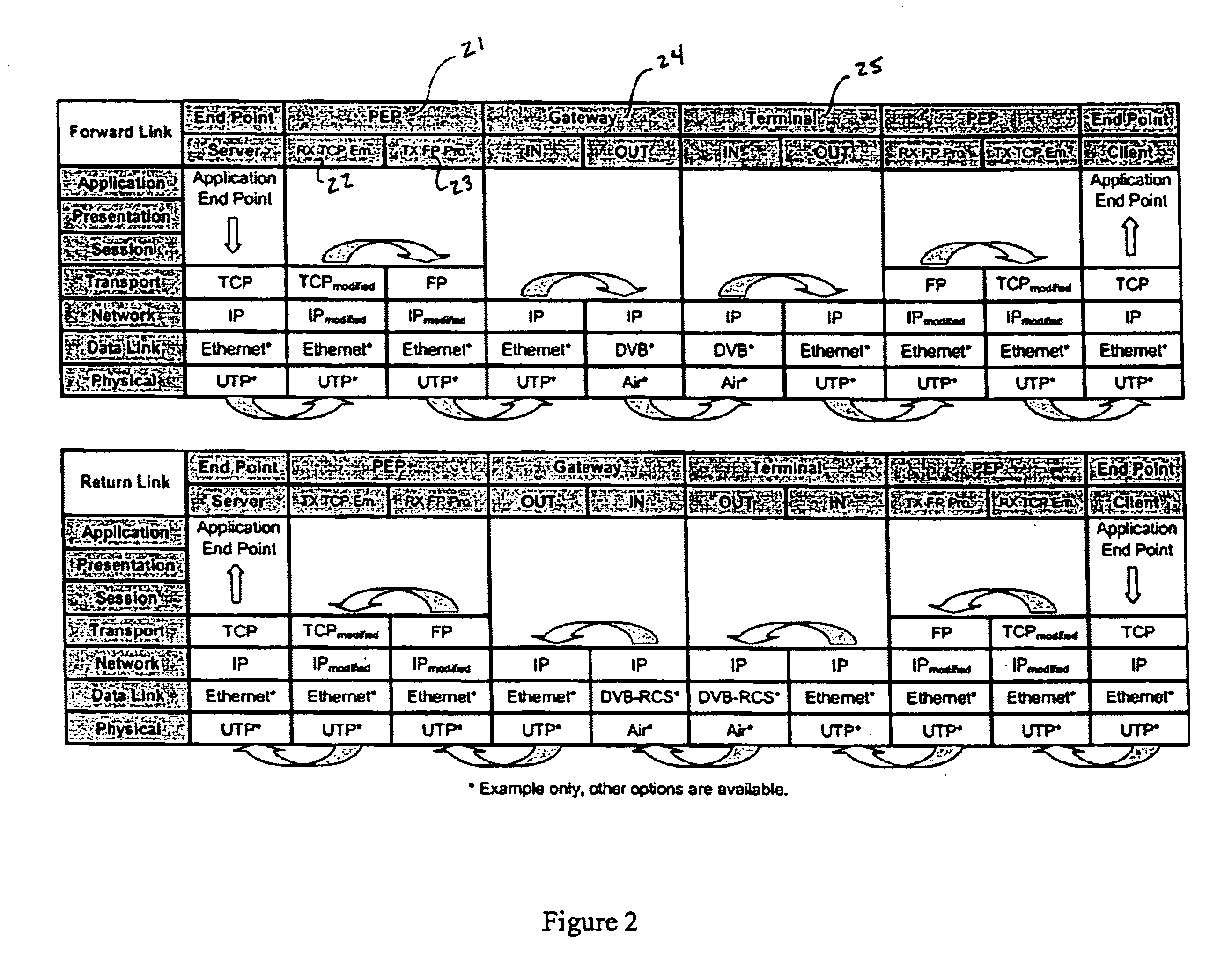In response to the established use of TCP and also of certain link types (such as satellite) which are not ideal for TCP, Performance Enhancing Proxies (PEPs) have been introduced TCP performance over
geosynchronous satellite (GEO) links is traditionally very poor from a user perspective in terms of transfer time and
throughput for web browsing and
file transfer, among other applications relying on a TCP
transport layer.
One of the link characteristics that affects TCP performance is
delay.
Several TCP mechanisms that control connection setup, flow control and error correction through
retransmission may be adversely affected by long
delay links.
Additionally, a user typically begins to view a
web page as it is downloading so an initial delay before any material is displayed may frustrate a user and also consequently, potentially cause re-requests which lower system efficiency.
Although more reliable than alternatives, however, this method involves a full RTT of overhead during which no data is transferred.
A problem with the above accelerated opening is that it is possible to open a connection locally that might then fail to establish end-to-end, resulting in a desynchronized state.
However, during the time that the two endpoints are desynchronized, the user will be confused, as the connection appears to be established but no data will be transferred, which again could lead to the user re-attempting the connection several times and
wasting bandwidth.
When this behavior occurs at a
router between ports, it is known as fragmentation and is commonly recognized to have detrimental side effects, such as lowering maximum
data rate (through additional header bytes and also
packet processing overhead at network nodes) and impacting efficiency.
However, fragmentation is necessary to allow the data to pass end-to-end.
Currently, there is little guidance on how PMTUD should function in the presence of PEPs.
However, a problem exists in a connection-splitting distributed PEP, due to the fact that the PEP devices are often buffering packets that are in transit between the endpoints.
Therefore, if a
router drops a packet after the second PEP in the connection and an ICMP Can't Fragment message is sent to the originator, a problem occurs.
Therefore, a
deadlock may occur until several retransmissions of the packet have failed and the connection has to be reset.
This however is not ideal for the reasons stated above.
Hence, problems exist in the current technique for PMTUD when PEPs are used.
If the PEP to PEP protocol does not support the transfer of certain TCP information from end-to-end then functionality will be lost; the TCP urgent pointer which is used to expedite transfer of portions of the
data stream being one example.
When choosing or designing a protocol for the problematic link there is, therefore, a tradeoff between efficiency and compatibility.
If using an entirely different protocol, it may be necessary to carry the TCP information in extra header structures, which may increase the packet overhead on each packet.
Also, the end-to-end path over which the connection travels may have intermediate equipment that does not know how to
handle unknown protocols.
If a protocol is not recognized, it may not be able to function properly at, for example, the NAT device or packets may pass the NAT device but be unrecognizable at the
receiver.
Additionally, the functionality of a newly designed protocol will impose constraints on the information that must be carried in each packet.
If the error conditions on the link change during the course of the transfer, the connection performance may be adversely impacted if an inappropriate
acknowledgement method is chosen.
For example, if the standard TCP acknowledgement scheme is selected, the TCP transfer may suffer very poor performance or even failure under heavy error conditions.
TCP is unable to adapt the acknowledgement scheme to changing error conditions during the course of the connection.
This problem exists with the conventional systems in the area of acknowledgement of packets.
However, in the conventional systems, only one
timer is used regardless of how many packets are being sent.
Therefore it may take different amounts of time to detect a
packet loss depending upon which packet in a group is lost.
Additionally, and perhaps more importantly, if an acknowledgement scheme is used in which repeated
retransmission triggers occur for the same packet, the single packet
timer provides no indication of how long an individual packet has been in transit.
This means that it is not possible to know if a transmitted packet has had time to be acknowledged or not.
This
scenario lowers the efficiency of the link as packets are transmitted multiple times unnecessarily.
This is a problem in the conventional systems related to controlling or limiting unnecessary retransmissions.
 Login to View More
Login to View More  Login to View More
Login to View More 


